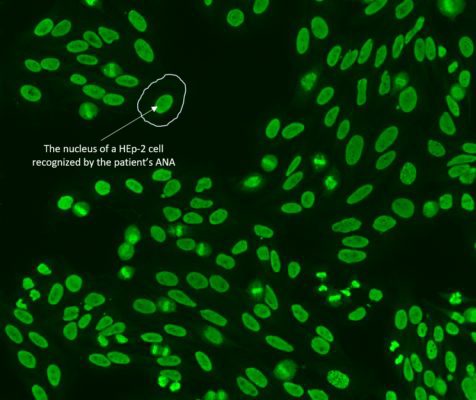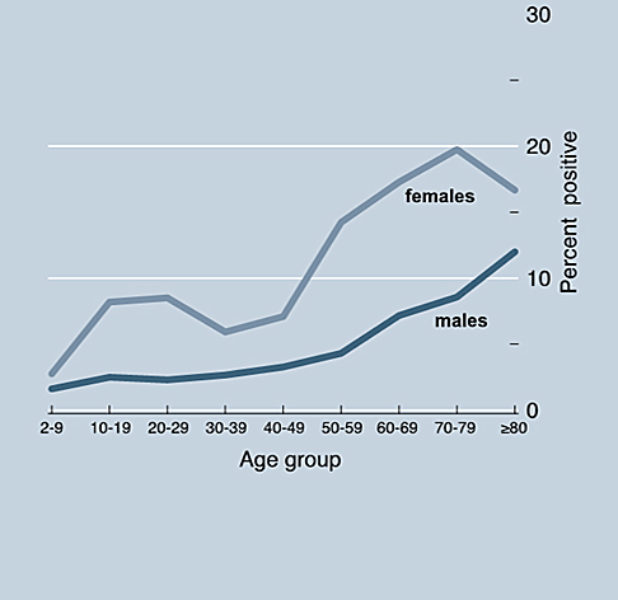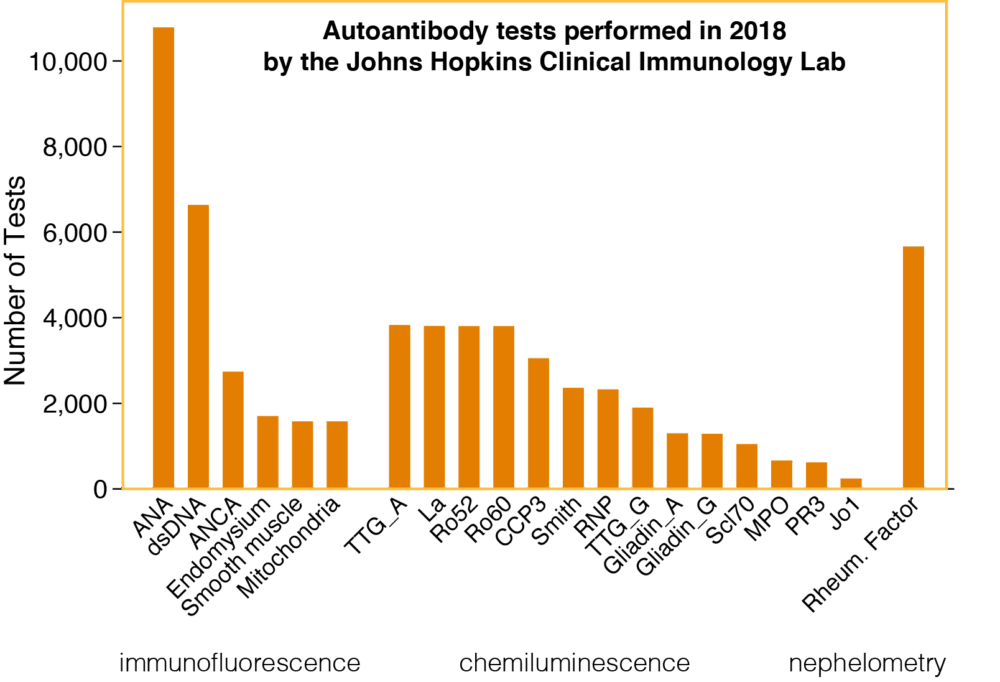Definition of Autoimmunity
Autoimmunity is the presence of antibodies (which are made by B lymphocytes) and T lymphocytes directed against normal components of a person (autoantigens). These components are called autoantigens or self-antigens and typically consist of proteins (or proteins complexed to nucleic acids). The antibodies and T lymphocytes that recognize autoantigens are called "autoantibodies" and "autoreactive T cells".

Autoimmunity is very common
If we use autoantibodies as an indicator for autoimmunity, we find there are many, many types of autoantibodies, directed against many different self-antigens. Thus, it is not surprising that if we were to test the serum broadly enough, we would find some autoantibodies in most “healthy” individuals. Similar reasoning applies to autoreactive T cells, although in the clinical laboratory it is much more complicated to test for T cells than for autoantibodies.
An additional proof that autoantibodies and autoreactive T cells can be present in individuals who do not have clinical evidence of autoimmune disease comes from the new types of cancer treatment based on immunotherapy. Cancer patients who are treated with inhibitors of immune checkpoints (such as CTLA-4 and PD-1) develop a broad activation of their effector T cells, which is the basis for eliminating the tumor cells. This broad activation of effector T cells, however, unleashes in a relatively short time a variety of immune-related side effects that resemble the autoimmune diseases occurring in the absence of cancer immunotherapy. The appearance of these autoimmune events secondary to the use of cancer immunotherapy strongly suggests that autoreactive T cells and autoreactive B cells (i.e., autoantibodies) do exist in healthy individuals, but are kept under control by regulatory mechanisms.

Autoantibodies are an excellent biomarker for autoimmunity
Since the beginning of the autoimmunity field, autoantibodies have been the tool used by clinical laboratories to diagnose and monitor autoimmunity. There are literally hundreds of different autoantibody tests a physician can order nowadays. The most common autoantibody test is the so-called ANA (for anti-nuclear antibody), which is performed using a technique called immunofluorescence. In the ANA test, the patient serum is incubated with cells fixed on a glass slide (these cells, called HEp-2, are a human epithelial cell line derived from a patient with laryngeal cancer). If the serum contains autoantibodies specific for antigens located in the nucleus of the HEp-2 cells, the antibodies will bind to these antigens. The binding is then revealed by the addition of a commercially-available antibody that recognizes all human antibodies and has been chemically modified by the coupling with a dye. The antigen-antibody complexes then "light up" when ultraviolet light is shined on the glass slide and observed under a fluorescent microscope.
ANAs are often found in the general population, even in the absence of any autoimmune disease. As the line graph shows, the prevalence of ANAs in the general population increases with age, and it is higher in women than men.

Autoantibodies can be measured in the serum by a variety of techniques, such as immunofluorescence, chemiluminescence, ELISA, and nephelometry. An example of the autoantibodies measured by the Johns Hopkins Clinical Immunology Laboratory is shown here.
To summarize: autoimmunity, defined as the presence of self-reactive B cells (autoantibodies) and/or T cells, is very common but does not necessarily mean "autoimmune disease."
Definition of Autoimmune Disease
Autoimmune diseases develop when the auto-reactive B lymphocytes (autoantibodies) and T lymphocytes described above cause a pathological and/or functional damage to the organ/tissue containing the target autoantigen(s). Thus, in autoimmune diseases the auto-reactive lymphocytes are the actual cause of the disease, rather than a harmless accompaniment.
In autoimmune diseases, auto-reactive lymphocytes expand polyclonally because the mechanisms that normally keep them at bay fail. In other words, autoimmune diseases can be considered a manifestation of immune dysregulation.
The term “polyclonal” in this context is used to indicate that in an autoimmune disease there are many different types of autoreactive lymphocytes (rather than multiple copies of the same lymphocyte). These lymphocytes that expand have different antigen receptors on their surface, recognizing different targets (called epitopes) within a single protein or a group of proteins. The term polyclonal distinguishes the expansion of lymphocytes seen in autoimmunity from that seen in malignancies where the expanded lymphocytes are all monoclonal (that is, identical copies of each other).
It is the expansion of these auto-reactive lymphocytes that ultimately causes pathological damage and hence the clinical disease. Damage occurs by a variety of mechanisms (discussed in the Type of Damage section).

